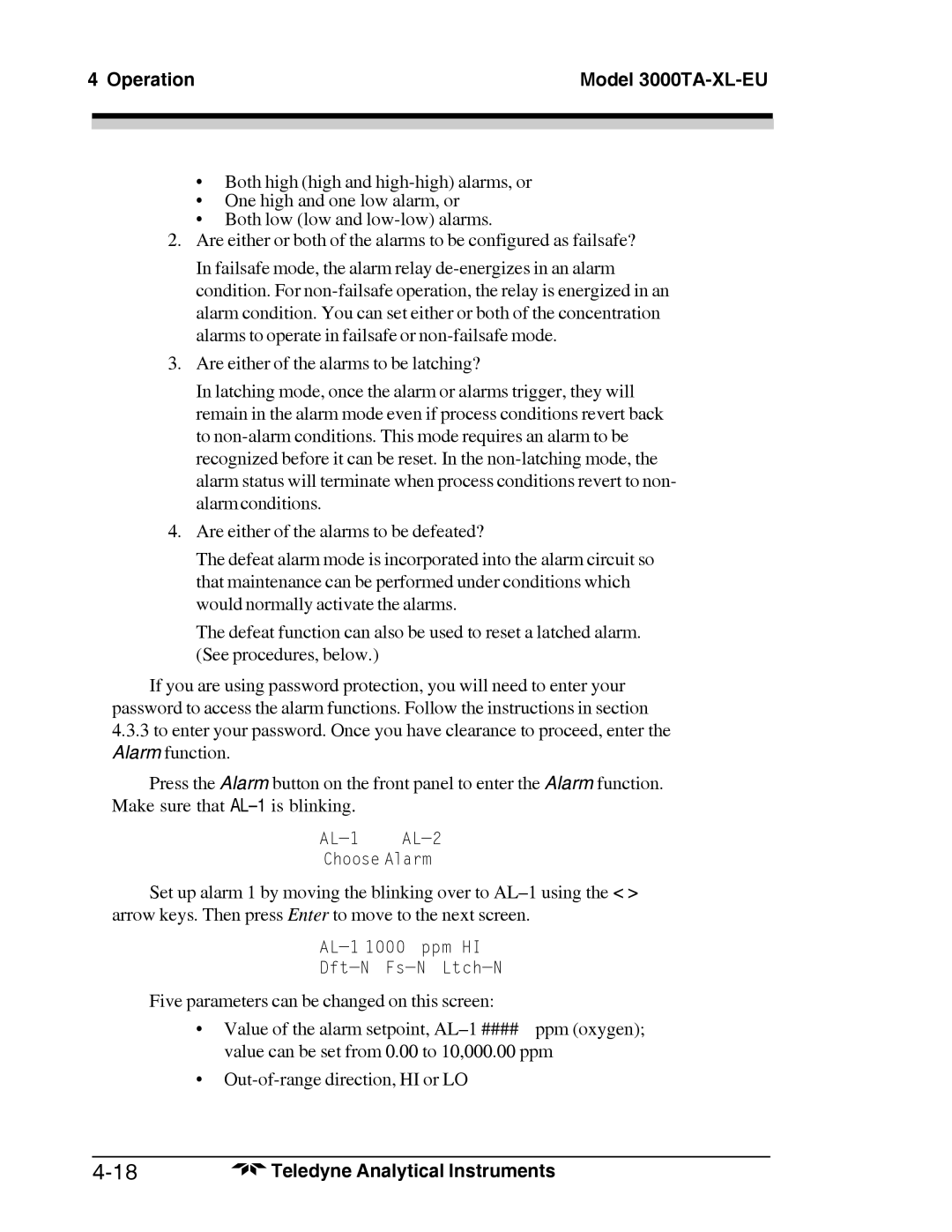4 Operation | Model | |
|
|
|
|
|
|
|
|
|
•Both high (high and
•One high and one low alarm, or
•Both low (low and
2.Are either or both of the alarms to be configured as failsafe?
In failsafe mode, the alarm relay
3.Are either of the alarms to be latching?
In latching mode, once the alarm or alarms trigger, they will remain in the alarm mode even if process conditions revert back to
4.Are either of the alarms to be defeated?
The defeat alarm mode is incorporated into the alarm circuit so that maintenance can be performed under conditions which would normally activate the alarms.
The defeat function can also be used to reset a latched alarm. (See procedures, below.)
If you are using password protection, you will need to enter your password to access the alarm functions. Follow the instructions in section
4.3.3to enter your password. Once you have clearance to proceed, enter the Alarm function.
Press the Alarm button on the front panel to enter the Alarm function. Make sure that
AL—1 AL—2
Choose Alarm
Set up alarm 1 by moving the blinking over to
Five parameters can be changed on this screen:
• Value of the alarm setpoint,
•
Teledyne Analytical Instruments |
